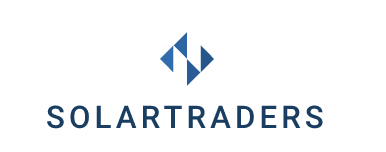In July 2021, PV Magazin conducted an exciting interview with the Chinese photovoltaic manufacturer Jinko Solar. The central point of this conversation was the development of the n-type TOPCon technology. It should be mentioned here that in the past some module manufacturers have turned away from mono-PERC technology and increasingly included n-type TOPCon technology in their manufacturing processes.
In this article, we would like to summarize for you the interview between Roberto Murgioni, Jinko’s Area Manager for Technical Services and Product Management in Europe and PV Magazine.
Future expectations for n-type technology
As we know, the cost of n-type TOPCon cells is now quite close to MONO-PERC cell costs. According to Murgioni, as cell efficiency improves and materials are optimized, the cost of n-type TOPCon cells is expected to be generally lower than that of PERC cells. Due to this and based on the limited efficiency of PERC cells, it is also expected that n-type will gradually replace p-type. Currently, the market share of n-type cell is 5%. However, Jinko’s division manager suggests that it will reach more than 30% in the next three to five years.
Let’s take a closer look at the advantages of this emerging technology. One emerging advantage over the p-type cell is the efficiency of the n-type cell. This efficiency is significantly higher here. In addition, it should be noted that modules with this technology have a significantly lower degradation rate in the first year and also a linear degradation This ensures that the modules provide a constant output over the years. From this, we can conclude that we can see much less performance degradation with n-type cells than with p-type cells. According to Murgioni, the combination with tracker systems and different ground plane environments can further enhance the power generation benefits of bifacial n-type modules.
The n-type technology is coming to market with a total of two different cell architectures. These include the TOPCon cell and the HJT cell. The TOPCon cell is about 1 % more efficient than the HJT cell. According to Murgioni, it can be concluded from this that the TOPCon cell technology basically has more potential to survive on the market. This thesis is based on the fact that with HJT cells, due to higher material costs, efficiency is seriously affected by a reduction in silver consumption. Jinko’s TOPCon cells use an innovative cell design and optimized metallization paste. In the future, the Chinese PV manufacturer is expected to reduce silver consumption in its own TOPCon cells to a level comparable to PERC
In order to be able to continuously develop TOPCon technology and at the same time continuously improve cell efficiency, Jinko is working with cell equipment manufacturers. Cell thickness will also be reduced in the future. The p-type is also briefly discussed in this Interview. However, the Chinese PV manufacturer is rather critical about the future of the p-type. Here, some process improvements are still necessary in order to be able to survive on the market. The production maturity and the equipment are still a risk for mass production.
Now, of course, the question arises whether Jinko Solar has already installed the pioneer independently. To this we can give you quite clearly a “yes”. Within the Tiger Pro n-type module series developed this year, the Chinese PV manufacturer has processed this cell technology. Also in the future, Jinko will ramp up the type of production according to the market demand.
Within the following figure, you can get a first graphical impression about the Tiger Pro module series developed by Jinko. In addition, this figure picks up a comparison between an n-type and p-type cell architecture.

Conclusion
We can see from the interview that n-type cell technology will play an increasingly important role in the market in the future. It can be assumed that, in addition to Jinko, other manufacturers will also start production. We are curious to see what developments we can observe in cell technology in the future.
References
Marian Willuhn – PV-Magazin; In Converstation: Top n-type performance; August 2021; https://www.pv-magazine.com/magazine-archive/in-converstation-top-n-type-performance/
Roberto Murgioni ? PV-Magazin; Top n-type performance; S. 40 f.
